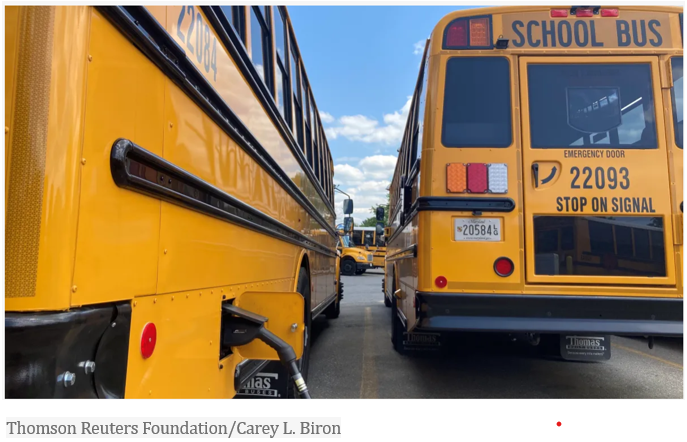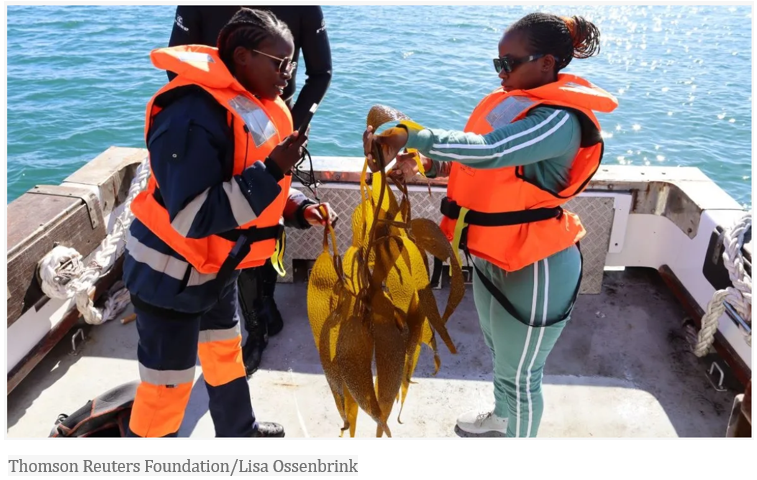Why is it so hard to finance climate action and relief?

Welcome to another issue of SnippETS, where we again showcase a number of interesting developments in the sustainability and climate change space.
This issue we examine the world of finance and how reform is needed into how renewable energy projects can be financed, especially in developing nations that may already be struggling to cope with servicing rising debt levels. Facing a choice between servicing a debt or implementing renewable energy projects shouldn’t even be a thing.
But finance is only part of the issue. We also need a comprehensive pipeline of renewable energy projects to fund, ideally already with their project implementation already figured out and the risks identified. A strong pipeline with funding available will also provide manufacturers the surety they need to ramp up capacity and meet the solar PV, wind generation and electrical storage, we desperately need. Using machine learning coupled with AI, may allow the development of this pipeline in as little as only twenty-four months.
We also examine how using bidirectional electrical charging can be used to make the grid more robust and provide storage at peak generation times, when there may be an excess in renewable electricity available.
We wrap up this week examining how nature plays an increasingly important role in our society, with using kelp to soak up carbon emissions, to houseplants that improve indoor air quality and promote better mental health and a sense of calmness.
If the war on Ukraine has revealed anything about the developed world, it’s that when rich countries really want to, they can deliver billions in financial support. So why is it so hard to finance climate action and relief? Finance is once again the dominant conversation point at UN climate talks, with developing nations disappointed with the lack of financial support for their carbon mitigation and adaptation efforts. It is clear that finance is still the biggest stumbling block to international progress on climate change. Read more...
And with rising debt around the world, it should be no surprise that international financial architecture reform is on the table, when small island developing states vulnerable to climate impacts spend at least eighteen times more on servicing debts than they receive in climate finance. Several initiatives are being discussed to address the issue, but in a currently GDP centric world, world leaders and finance institutions are struggling to decide whether to prioritise the debt crisis or climate crisis. Really, like we have a choice? Read more....
Climate finance conversations and summits must go beyond just allocating cash and be backed up with viable projects to invest in. The international community met recently, to seek the reform of the multilateral financial system to address climate change. Most investments are expected to come from private sources, with many partners involved. Developers, lenders, contractors, utilities, regulators, and service providers. To meet sustainable pledges, just looking at Africa requires the addition of nearly 130GW of installed capacity for solar PV until 2030 to meet its ‘Sustainable Africa’ Scenario. Read more....
And it’s not just Africa that needs to scale up renewable energy, there remains a glaring absence of a comprehensive global project pipeline for clean energy. By leveraging the power of machine-learning and artificial intelligence, a dedicated collective of engineers, architects and technology companies could potentially establish a global pipeline of hundreds of thousands of clean energy projects aligned with the 1.5°C target within a span of as little as 24 months. Read more....
The often touted reason to not build new wind farms is their noise and vibration. This was certainly cited by more than a few right-wing Australian politicians, as reason to not develop wind farms. Those concerns however, have now been found to be baseless, after multiple studies conducted in different countries, found no evidence linking wind farm noise to sleep disturbance or adverse health effects. This highlights the importance of evidence-based research in dispelling misconceptions and providing valuable insights for policymakers and stakeholders when considering renewable energy options. Read more....
How might we address supply shortfalls during periods when renewable energy can’t generate electricity? In the U.S. they have explored using electric school buses as a means to support and stabilise the electricity grid. These buses, equipped with bidirectional charging capabilities, can serve as mobile energy storage units that can supply power back to the grid during times of high demand or emergencies. Leveraging electric school buses as grid assets can contribute to a more sustainable and resilient energy system. Read more....
To ensure finance is used appropriately when combating climate change, there is a need for a common understanding of a credible transition to prevent "transition washing" - a greenwashing term used to describe misleading claims or actions that give the appearance of sustainability, without significant progress. In other words, we can’t allow finance intended for transitioning away from fossil fuels to be used by companies to continue climate damaging practices. This will require collaboration between businesses, governments, and civil society to drive a just transition and foster accountability. Read more....
In Namibia, kelp forests are playing a crucial role in isolating carbon and mitigating climate change. These underwater ecosystems act as natural carbon sinks, trapping significant amounts of carbon dioxide from the atmosphere. The growth of kelp forests in Namibia has been facilitated by the upwelling of nutrient-rich waters. Scientists are studying the potential of scaling up kelp farming as a nature-based solution to combat rising carbon emissions. This innovative approach highlights the importance of harnessing nature's capabilities in the fight against global warming. Read more....
With the growing trend of constructing buildings using hemp, a strain of cannabis, Hempcrete, a material made from the woody core of the hemp plant mixed with lime and water, is gaining popularity for its environmental benefits and thermal properties. Hemp-based buildings offer improved insulation, reduced carbon emissions, and the potential for carbon capture. Additionally, hempcrete is fire-resistant and has good moisture control properties. This article discusses the potential of hemp-based construction to contribute to sustainable and eco-friendly architecture of the future. Read more....
Our final article discusses the benefits of houseplants for improving air quality and mental health. Explaining how certain plants can filter harmful pollutants and toxins from the air, enhancing indoor environments. The author recommends specific houseplants such as snake plants, peace lilies, and spider plants that are known for their air-purifying properties. These plants can absorb pollutants like formaldehyde and benzene, promoting healthier air quality. Exploring the importance of incorporating houseplants into homes and workplaces to create a happier and healthier living environment. Read more....

This week we have the following innovation articles we hope you find interesting:
Toyota claims battery breakthrough in potential boost for electric cars
It was an accident': the scientists who have turned humid air into renewable power
Billionaire-backed 100-hour iron-air battery gets go ahead to help replace coal
Netflix and Disney seek to ditch the diesel on TV and movie sets
Australian start-up targets fertiliser and hydrogen markets with plasma-to-ammonia tech
Copyright of all featured articles lies with the original authors




























Comments